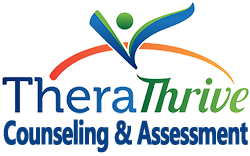
What is ADHD?
ADHD
Hyperactivity Attention Hyperactivity Disorder (ADHD) is a neurodevelopmental condition that impacts executive functioning.
ADHD is characterized by persistent patterns of inattention, hyperactivity, and impulsivity that may hinder daily functioning and performance. ADHD is not simply a lack of focus or discipline; it’s a complex interplay of neurological differences, that comes with a genuine struggle to keep things on track.
In an ADHD world, it can feel like some of the puzzle pieces do not always fit, with a constant flow of thoughts and impulses. It is easy to think of ADHD as hyperactivity, however there is a lot more to ADHD.
Executive Dysfunction
Executive dysfunction occurs when you struggles with executive functioning. This is prevelent with ADHD.
Executive Functioning is an umbrella term to describe how we achieve goals. Executive functioning involved working memory, which is your active memory and the thoughts you hold in the moment.
Executive functioning helps with:
- Planing ahead, mental mapping
- Achieving goals
- Making choices, decisions
- Cognitively flexibility, adapting to new situations
- Considering what will happen (future thinking)
- Inhibition control, thinking before you act
- Internal motivation
- Critical thinking, fluid reasoning
- Complex problem-solving and building on your stored knowledge to think creatively
- Breaking down the complicated to smaller steps
When it comes to ADHD, executive dysfunction can impact:
- Focus. You may become easily distracted, you may daydream, spac-out, and this can occur in class, at work, at home, or even during a conversation.
- Transitions. You may shif from one topic to another. You may have trouble adapting to whatever comes up. Essentially, you may have transitional issues and/or problems with unexpected changes.
- Emotional management. People with ADHD often experience emotional dysregulation, and may also struggle with regulating their behavior. Emotional management can impact both the immediate moment and the long term goals, because what we do impacts our ability accomplish long-term goals.
- Acting impulsively. ADHDers may blurt out and interrupt others, which can impact realtionships with friends, family, at school and at work. Impulsivity makes it harder to stick with tasks, even if you want to do them.
- Overwhelm. Connecting concepts and ideas that are not obvious can become harder when you are overwhelmed or overloaded with too much stimulii. ADHDers may become overwhelmed with trying to put ideas into words.
- Utilization of strengths. Executive dysfunction can inhitbit creative problem-solving, even in a truly talented, twice-exceptional, and gifted person. Exectuive dysfunction can also damper your ability to visual a finished product or end goal, making it harder to complete projects, assignments, or daily life chores such as the washing dishes, putting away laundry, or getting everything that was on the shopping list.
3 Types of ADHD
Inattentive Type
- Forgetfulness
- Struggles with concentration
- Easily Distracted
Hyperactive/Impulsive Type
- Mood changes easily
- Difficulty slowing down
- Restlessness
Combined Presentation
- Meets all criteria for inattentive type
- Meets all criteria for hyperactive/impulsive type
ADHD Is A Natural Part of Human Diversity
Neurodiversity, originally coined by sociologist Judy Singer in 1998, is a term used to normalize and destigmatize what have traditionally been called neurodevelopmental disorders (and as described by the DSM IV-TR).
Neuroscience research has shown that each human brain is unique, and this uniqueness can be attributed to several factors, including genetics and life experiences. The uniqueness of our brain is akin to the uniqueness of our fingerprints.
Low levels norepinephrine
One such area of study has been on the connection between ADHD and low levels norepinephrine (a neurotransmitter). Norepinephrine is linked arm-in-arm with dopamine. Dopamine is the neurotransmitter that is involved in feelings of pleasure and the regulation of attention. Thus, there are genetic factors that contribute to developing ADHD.
Research indicates that ADHDers have at least one defective gene, the Dopamine Receptor D2 gene (also called the DRD2 gene). Essentially, this DRD2 gene defect makes it difficult for the neurons to respond to dopamine. Since DRD2 is a protein coding gene, it can impact focus, maintaining attention and promotes a drive to seek pleasure.
Strengths amidst challenges
At TheraThrive, we believe ADHD is a part of neurodiversity, and has its own unique strengths as well as challenges. The same person who may struggle with concentration can notice the small details. The person who may struggle with slowing down can be a creative problem-solver with new solutions. We believe each person’s experience with ADHD is different and we are here to support you to utilize your strengths to help with work-arounds in managing the challenges.
You are not alone.
We Can Help
Therapy can help you by gaining self-understanding, tools to utlize your strengths, work-arounds for challenges, and genuine support to embrace the unique strengths that come with ADHD.
With the right tools and a dash of resilience, you can turn every struggle into a triumph.
If you or your loved one is struggling with ADHD, you are in the right place. At TheraThrive we specialize in neurodiversity, including ADHD, autism, giftedness, learning disabilities and more.
Our top-notch therapists provide counseling, therapy and assessment for children, teens, adults, parents, couples/relationships, and groups. We believe in supporting you to understand your particuolar strengths and challenges. Our goal is to help you build self-understanding and skills needed to thrive.
Join us at TheraThrive, where we value transparency, connection, and collaboration in order to best support your journey. Schedule an appointment today and let’s work together to help you thrive!
In case you would find it intresting, here are a few reference articles.
References
Blum, K., Chen, A. L., Braverman, E. R., Comings, D. E., Chen, T. J., Arcuri, V., Blum, S. H., Downs, B. W., Waite, R. L., Notaro, A., Lubar, J., Williams, L., Prihoda, T. J., Palomo, T., Oscar-Berman, M. Attention-deficit-hyperactivity disorder and reward deficiency syndrome. Neuropsychiatr Dis Treat. 2008 Oct;4(5):893-918. doi: 10.2147/ndt.s2627. PMID: 19183781; PMCID: PMC2626918. https://www.ncbi.nlm.nih.gov/pmc/articles/PMC2626918/#:~:text=People%20with%20ADHD%20have%20at,and%20the%20regulation%20of%20attention.
Krull, K. R., Chan, E. (2023, March, 09) Attention deficit hyperactivity disorder in children and adolescents: Clinical features and diagnosis. UpToDate. https://www.uptodate.com/contents/attention-deficit-hyperactivity-disorder-in-children-and-adolescents-clinical-features-and-diagnosis#:~:text=For%20children%20%3C17%20years%2C%20the,symptoms%20of%20inattention%20are%20required.
Palacios, J. M., Camps, M., Cortés, R., & Probst, A. (1988). Mapping dopamine receptors in the human brain. Journal of neural transmission. Supplementum, 27, 227–235. https://doi.org/10.1007/978-3-7091-8954-2_20
Serý, O., Drtílková, I., Theiner, P., Pitelová, R., Staif, R., Znojil, V., Lochman, J., & Didden, W. (2006). Polymorphism of DRD2 gene and ADHD. Neuro endocrinology letters, 27(1-2), 236–240.
Zhong, L., He, H., Zhang, J., Gao, X., Yin, F., Zuo, P., & Song, R. (2023). Gene Interaction of Dopaminergic Synaptic Pathway Genes in Attention-Deficit Hyperactivity Disorder: a Case-Control Study in Chinese Children. Molecular neurobiology, 10.1007/s12035-023-03523-4. Advance online publication. https://doi.org/10.1007/s12035-023-03523-4
Find A Therapist
Documents
